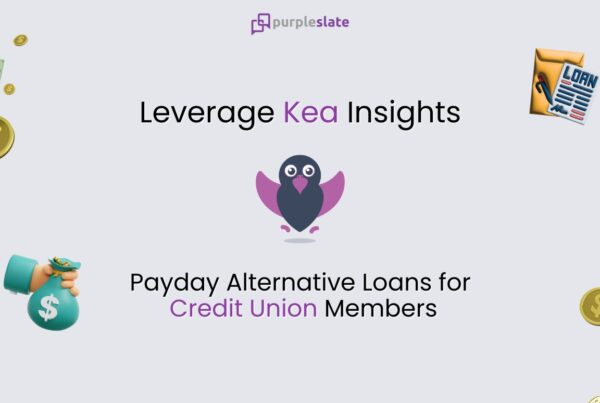
Introduction
Every business leader is expected to take the right decisions no matter what the circumstances dictate. Throughout history, wars won, kingdoms conquered, and empires built, were all dependent on effective decision-making. However, there was a common notion that all effective decisions were a result of experience.
More than 50% of Americans trust “instinct” over data to take decisions
The ‘gut-feeling’ started to rule the decision-making process across all walks of life including business decisions. This continued till the last years of the 19th century when businesses realized the power of data and how it can influence decision-making. The term business intelligence was coined during that period.
Benefits of Data-Driven Decision-Making for the Modern World
Data-driven decision-making is defined as employing the information taken from data to take impactful decisions that fulfills organizational goals like:-
- Improving the bottom line
- Successfully capturing a new market
- Analyzing the financial health of a business
Data-driven organizations are three times more likely to report significant improvements in decision-making compared to those who rely less on data
These are but a few instances of what can be achieved with data-driven decision making. The impact of data-driven decision-making is not only felt at the organizational level but also on an individual level.
Increase in Decision Confidence
The volume of data analyzed is directly proportional to the quality of insights generated. As a business leader, your decisions built on top of insights will definitely help you move towards your goal. Continuous practice of data-driven decision-making will improve your confidence. You will be able to achieve your targets and complete milestones with ease.
Become more Proactive
The default response for any business situation is a fight or flight mode. You were always reacting to situations. Data-driven decision-making will slowly shift the balance towards a proactive response. In short, you will be better prepared to handle situations. In certain scenarios, you would be able to predict the occurrence with data insights.
Embracing Frugality
The keyword here is frugal, not cheap. Cost savings would become part of your daily mantra when implementing data-driven decision-making. Optimization across processes, strategy, and other fronts of an organization backed by data will ensure cost savings while improving the quality of output. A solid win-win situation.
The Role of Dashboards in Data-Driven Decision-Making
Business leaders like you throughout the world will be sifting through many dashboards daily such that it has become a daily routine. Everyday decision-making has been simplified to a great extent by a dashboard.
But are they the ultimate solution for business leaders to take data-driven decisions? There are two scenarios that you as a business leader must consider.
Are Dashboards Enough for Data-Driven Decision-Making?
| Arguments For Dashboards | Arguments Against Dashboards |
| Bird’s Eye View Dashboards are great tools when it comes to providing an aerial perspective of the story your data wants to tell. Seasoned business leaders can make out the pattern and trend of where a metric is going just by looking at the dashboard. |
No Momentary Information All your data questions are momentary. For example, you want to know about the attrition rate in the second quarter while the dashboard is giving you the entire history. If the format changes by a little bit, even seasoned business leaders will struggle to hunt for the information. |
| One Stop Shop Dashboards ensure a complete picture of your data points. You don’t have to fetch data from different spreadsheets and then try to analyze it. Your decisions will become more streamlined with a one-shot glance at the trends. |
Historical Data On the other end, dashboards are historical in nature. They don’t have real-time insights. This means that dashboard creation needs to be repeated at frequent intervals to continue making “data-driven” decisions. |
| Great Visualizations Let’s be honest, dashboards are known for their colorful visualizations. Be it a piechart or a histogram, suddenly the disjointed numbers in the data table are making more sense with visualizations. |
Information Fatigue But there are too many visualizations and metrics represented in a dashboard. Sifting through the information to access the one that summarizes your targets is stressful and tiring. Information fatigue is a real problem with dashboards. |
| Self-Service by Nature Creating a dashboard is easier as compared to the traditional BI process where one has to depend on other teams. With point-and-click graphical user interfaces, anyone can create their own dashboard. |
Human Bias If someone continues creating dashboards there’s a high probability they will develop a human bias. The downside with that is at times when it’s required, they might not dig deeper to uncover more insights. |
But the gap areas associated with dashboards do not stop there. There are more high-impacting problems.
Decision Delays
Each dashboard takes time to be created. The process needs to be repeated at certain time frames. Such delays will impact the time taken to make decisions. These delays are costly because of the opportunity cost organizations will lose. Add to that the backlog of creating multiple dashboards. This turns dashboard creation into a pure clerical task, thereby limiting value addition.
Accidental Insight Discovery
Uncovering new insights from the existing dataset becomes an accidental process as opposed to a purpose-driven task. The impact of accidental insight discovery weighs heavily when information that could’ve impacted the operational cost savings is discovered late. Many activities are time driven in organizations. Critical impacts discovered late can impact the effectiveness of such activities.
The Solution to Override the Problems of Dashboards
Dashboards was a revelation in data analytics, forcing leaders to look at data analytics in a new light. But the world has moved further from historically reactive dashboards to more impactful momentary information access. It’s safe to assume that dashboards are dying.
But that’s not the end of the dashboard era. They’re still valid solutions and will be transformed into Conversational Insights – a solution more valid for the current era of business leaders.
Would you like to know more about how conversational insights can help modern business leaders derive actionable insights for their momentary data questions?




